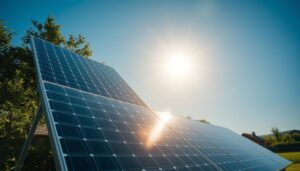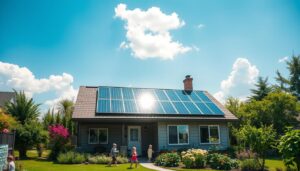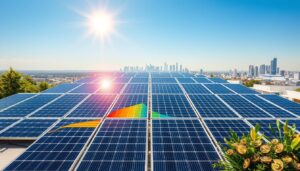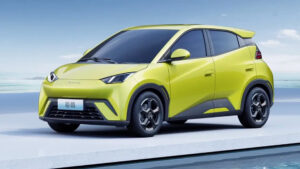
hybrid solar systems
In recent years, solar energy has emerged as a frontrunner in the quest for renewable energy solutions. Among the various types of solar systems available, hybrid solar systems have gained significant attention for their blend of solar power and battery storage or generator backup. While hybrid solar systems come with remarkable advantages, they are not without their drawbacks. In this article, we will thoroughly explore hybrid solar systems, their disadvantages, and essential considerations for potential users.
Understanding Hybrid Solar Systems
Before delving into the disadvantages, it is crucial to grasp what hybrid solar systems are. A hybrid solar system typically combines solar panels, a battery storage unit, and a backup generator. This setup allows users to harness solar energy during the day while providing the option to draw from batteries or generators during night-time or adverse weather conditions.
Key Components of Hybrid Solar Systems

- Solar Panels: Capture sunlight and convert it into electricity.
- Inverter: Converts the direct current (DC) generated by solar panels into alternating current (AC) suitable for household use.
- Battery Storage: Stores excess solar energy for later use.
- Backup Generator: Provides power during prolonged periods of low sunlight or increased electricity demand.
Table: Advantages and Disadvantages of Hybrid Solar Systems
| Advantages | Disadvantages |
|---|---|
| Effective energy management | Higher initial costs |
| Reduced dependence on the grid | Complexity of the system |
| Environmental benefits | Maintenance requirements |
| Energy independence | Limitations in storage capacity |
| Lower electricity bills | Potential for battery degradation |
Disadvantages of Hybrid Solar Systems

While hybrid solar systems are a fantastic solution for many households seeking energy independence, there are several disadvantages to consider before making a significant investment.
1. Higher Initial Costs
One of the most significant drawbacks of hybrid solar systems is the initial purchase and installation costs. Compared to traditional solar systems, a hybrid setup—with additional components like batteries and generators—can be considerably more expensive.
- Components: The cost of batteries and inverters can push prices into the tens of thousands, depending on the system size.
- Installation: Professional installation is necessary to integrate all components correctly, adding to the expense.
2. Complexity of the System
Hybrid solar systems can be more complex than traditional setups due to the multiple components involved in the design. This complexity can lead to a few issues:
- Setup: Proper installation requires skilled professionals familiar with both solar technology and battery systems.
- Monitoring and Maintenance: Users may need to invest in advanced monitoring solutions to keep track of energy production, consumption, and battery health.
3. Maintenance Requirements
Maintaining a hybrid solar system is essential to ensure its longevity and performance, but it can come with challenges:
- Battery Maintenance: Batteries may require regular checks and eventual replacement, impacting long-term savings.
- Inverter Checks: Inverters need periodic inspection and servicing to maintain efficiency.
4. Limitations in Storage Capacity
While battery storage is a great asset, it also comes with limitations:
- Storage Size: Depending on the battery chosen, there may be limitations on how much energy can be stored. This can impact energy availability during high-demand periods or extended cloudy days.
- Energy Loss: Batteries typically lose a small percentage of charge during their cycle, leading to potential energy inefficiency.
5. Potential for Battery Degradation
Batteries degrade over time, resulting in a loss of capacity and performance. Factors that can lead to degradation include:
- Cycle Count: The number of charge and discharge cycles can affect battery lifespan.
- Temperature Extremes: High temperatures can accelerate degradation, especially if batteries aren’t adequately ventilated.
Key Considerations for Potential Users
Before investing in a hybrid solar system, there are some essential factors to consider:
- Budget: Assess your budget for initial costs and future maintenance needs.
- Energy Needs: Consider your energy consumption patterns and whether a hybrid system meets those needs effectively.
- Location: Evaluate your location’s sunlight exposure, as areas with less sun may require more robust storage solutions.
- Incentives: Research available tax credits, rebates, and incentives that can offset installation costs.
FAQs
1. Are hybrid solar systems worth the investment?
Hybrid solar systems can be worth the investment depending on your energy needs, budget, and local solar regulations. They provide energy independence and can significantly reduce reliance on grid power.
2. How long do battery systems last?
Most solar batteries last between 5 to 15 years, depending on the type of battery, usage patterns, and maintenance. Regular monitoring can help in extending their lifespan.
3. Can I add batteries to my existing solar system?
Yes, it is possible to add batteries to an existing solar setup. However, it’s crucial to consult with a solar expert to ensure compatibility and proper installation.
4. What happens during power outages?
In a hybrid solar system, batteries allow users to continue using electricity during power outages, assuming they have been adequately charged.
5. Do hybrid systems qualify for tax incentives?
Many countries and regions offer tax incentives for solar energy systems, including hybrids. It is essential to check with local regulations and incentives to maximize financial benefits.
Conclusion
Hybrid solar systems present a compelling option for those looking to embrace solar energy while maintaining energy reliability. However, potential buyers should carefully weigh the disadvantages against the advantages. By understanding the complexities, initial costs, and maintenance needs associated with these systems, users can make informed decisions that align with their energy requirements and financial capacities.







1 thought on “Hybrid Solar : What are the Disadvantage of a Hybrid Setup?”
Comments are closed.